Nature is a masterpiece of art, and each landscape holds its unique allure. Landscape backlighting is a transformative method that gives new life to outdoor spaces, illuminating their natural beauty in mesmerizing ways. When it comes to creating a great outdoor setting, the proper lighting can make or break it. Outdoor backlighting is a technique that has gained popularity for its ability to add depth and drama to gardens, pathways, and exterior living areas. Understanding the interplay between light and shadow is the key to landscape backlighting.
When light sources are placed behind objects or plants in a landscape, they form attractive silhouettes against the background. As the sun sets or artificial lights come on, the environment transforms into a magnificent vision in which silhouettes dance smoothly and everyday elements become outstanding. In this in-depth study, we’ll dig into the enthralling world of landscape backlighting, investigating its techniques, benefits, and innovative uses. Prepare to be enchanted by the fascinating universe of lit landscapes, whether you’re a seasoned landscaper or a nature fan.
Landscape Backlighting Definition. What is Landscape Backlighting
Landscape backlighting, also known as landscape silhouette lighting, is the strategic placement of lights behind objects or features in the landscape to create a striking visual effect. The concealed light source emphasizes the object’s silhouette and casts a lovely, gentle glow around it. This method is commonly used for highlighting trees, sculptures, water features, and architectural elements, elevating the overall aesthetics of the outdoor space.
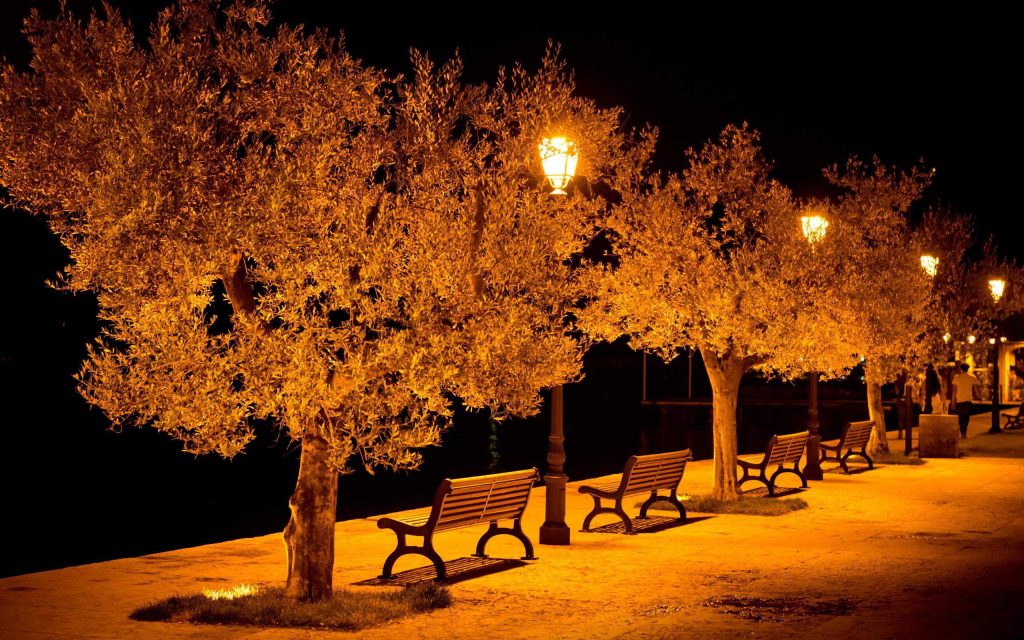
The Importance of Outdoor Landscape Backlighting
Lighting is crucial in the field of outdoor design and landscaping for creating attractive settings. Outdoor landscape backlighting is a powerful lighting method that can convert ordinary outdoor landscapes into magnificent scenes that remind one of a fairy tale. Backlighting transforms outdoor areas into spectacular realms of wonder, from improving visual appeal and establishing safe conditions to extending useable outdoor hours and highlighting architectural characteristics. As we embrace the importance of outdoor landscape illumination, let us remember to mix aesthetics with sustainability, creating harmonious and engaging landscapes that have a lasting impact on people who experience them.
Landscape Backlighting Advantages and Disadvantages
Landscape backlighting is an enthralling lighting method that gives depth and charm to outdoor spaces. This method creates a magnificent interplay of light and shadow by properly arranging light sources behind landscape objects, transforming ordinary views into enchanting visual masterpieces. However, landscape backlighting, like any other lighting technique, has benefits as well as drawbacks. We will delve into both aspects in this post, assisting you in understanding the potential benefits and considerations of implementing landscape backlighting into your outdoor design.
Landscape Backlighting Advantages
Aesthetic Appeal: The fundamental benefit of landscape lighting is its unrivaled aesthetic appeal. When positioned behind trees, plants, or sculptures, the light source generates a gentle, ethereal glow that enhances the inherent beauty of the scene. The interplay of light and shadow gives depth and drama to the scene, boosting its visual appeal. Landscape backlighting can transform any outdoor space into a wonderful environment that fascinates visitors, whether it’s a private garden or a public park.
Increased Usability: The expansion of useful outdoor hours is a significant advantage of landscape lighting. Backlighting helps residents and guests to enjoy the outdoor space after dusk by illuminating pathways, seating areas, and other features. This is especially beneficial for business enterprises because it allows them to conduct evening events and gatherings, offering their customers unique experiences.
Flexibility in Design: Landscape backlighting offers versatility and flexibility in design. With various types of lights and fixtures available, designers can achieve different effects and moods, tailoring the lighting to suit specific landscapes or events. The ability to adjust the intensity and color of the backlighting provides ample room for creative expression and experimentation.
Highlighting Architectural Features: Aside from natural components, landscape backlighting can be utilized to emphasize architectural features and artistic displays. Designers can draw attention to the most captivating parts of buildings, monuments, and other structures by strategically arranging lights, bringing a sense of elegance and grandeur to the outside landscape.
Safety and Security: Landscape backlighting improves the safety and security of outdoor environments. It decreases the danger of accidents and potential hazards by effectively illuminating pathways, staircases, and access points. Outdoor backlighting creates a sense of warmth and ease, making guests feel safe and welcome even at night.
Landscape Backlighting Disadvantages
High Initial Investment: One of the primary drawbacks of landscape backlighting is the initial cost. Installing all the necessary fixtures and lighting equipment can be expensive, especially for large outdoor spaces. Furthermore, if the project necessitates intricate electrical work, the entire cost may increase.
Glare and Eye Discomfort: Excessive backlighting or poor placement of lights can lead to glare, causing discomfort and strain on the eyes of visitors and nearby residents. Careful consideration of light positioning and intensity is necessary to avoid this issue.
Light Pollution Concerns: Improperly designed or overly bright landscape backlighting can contribute to light pollution, which negatively impacts the natural environment and disrupts wildlife behavior. It’s essential to strike a balance between creating a captivating visual experience and preserving the ecological integrity of the area.
Maintenance Requirements: Outdoor lighting installations are exposed to the elements, making them susceptible to wear and tear over time. Regular maintenance is crucial to ensure that lights remain functional and in good condition. This ongoing upkeep can be time-consuming and may require professional assistance, further adding to the overall cost.
Energy Consumption: Landscape backlighting can take a large amount of energy depending on the type and number of lights utilized. To help offset this, choose energy-efficient LED lights and use timers or motion sensors to control lighting activation.
Types of Landscape Backlighting
Landscape backlighting is a captivating lighting method that adds a touch of magic to outdoor environments. By placing light sources strategically behind landscape elements, this method creates stunning visuals, elevating the overall aesthetics of the space. There are different types of landscape backlighting, each serving a unique purpose and contributing to the charm of the outdoor area. In this post, we will delve into four distinct types of landscape backlighting: Landscape Ambient Backlighting, Landscape Task Backlighting, Landscape Accent Backlighting, and Landscape Decorative Backlighting. Understanding these considerations will help you choose the perfect lighting approach for your outdoor design needs.
Landscape Ambient Backlighting
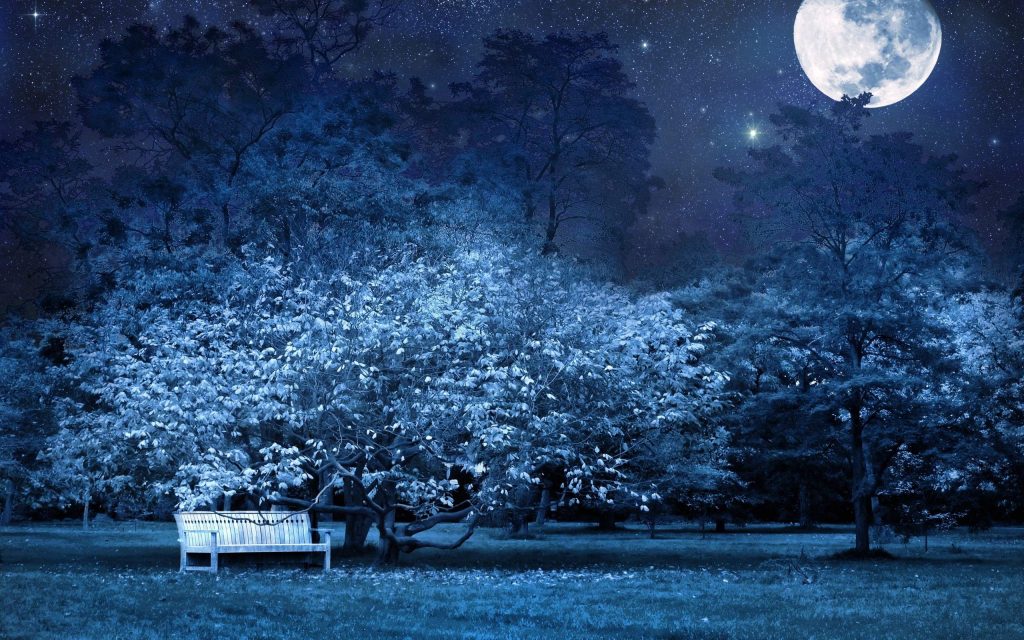
The goal of landscape ambient backlighting is to create a welcoming mood throughout the entire outdoor space. This type of lighting is soft and peaceful, casting a mellow glow over the environment. Installing low-intensity light fixtures behind trees, shrubs, or garden objects creates ambient backlighting, which casts a gentle, diffused illumination across the area. The purpose of landscape ambient backlighting is to create a lovely environment that inspires rest and introspection amid nature’s magnificence.
Landscape Task Backlighting
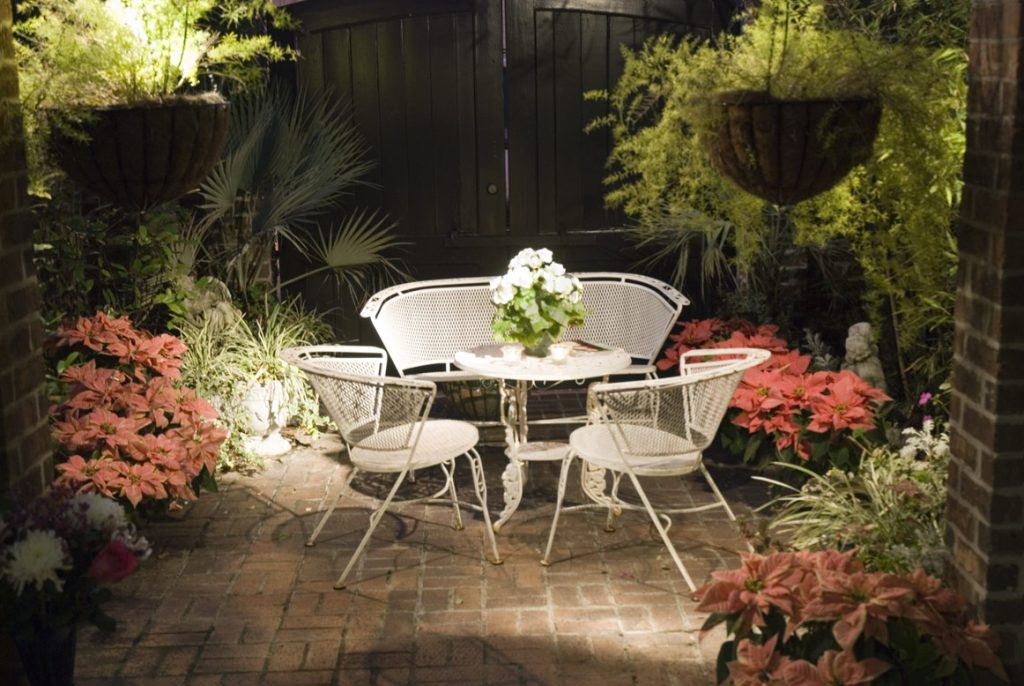
Landscape task backlighting serves a functional purpose by providing ample lighting for specific tasks and activities in the outdoor space. This type of backlighting is ideal for areas such as outdoor kitchens, seating areas, and pathways. By placing brighter light sources behind functional elements, outdoor task backlighting ensures that residents and guests have ample light for reading, cooking, or navigating safely through the landscape at night. Outside task backlighting enhances the usability and practicality of the outdoor environment, allowing it to be functional even after sunset.
Landscape Accent Backlighting
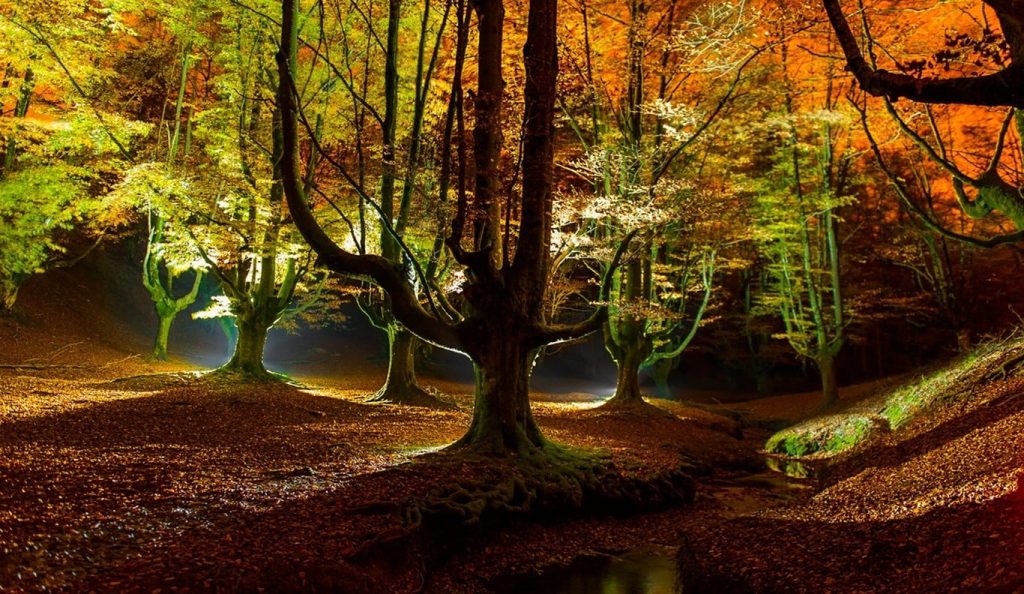
Landscape accent backlighting aims to highlight specific features or focal points within the landscape, such as statues, architectural elements, or unique plant arrangements. The light fixtures used for accent backlighting are typically adjustable to achieve the desired focus and intensity. By casting a radiant glow on these focal points, outdoor accent backlighting draws attention and creates a sense of drama, adding depth and intrigue to the overall design. This type of backlighting adds a touch of sophistication and elegance, turning ordinary landscapes into extraordinary works of art.
Landscape Decorative Backlighting
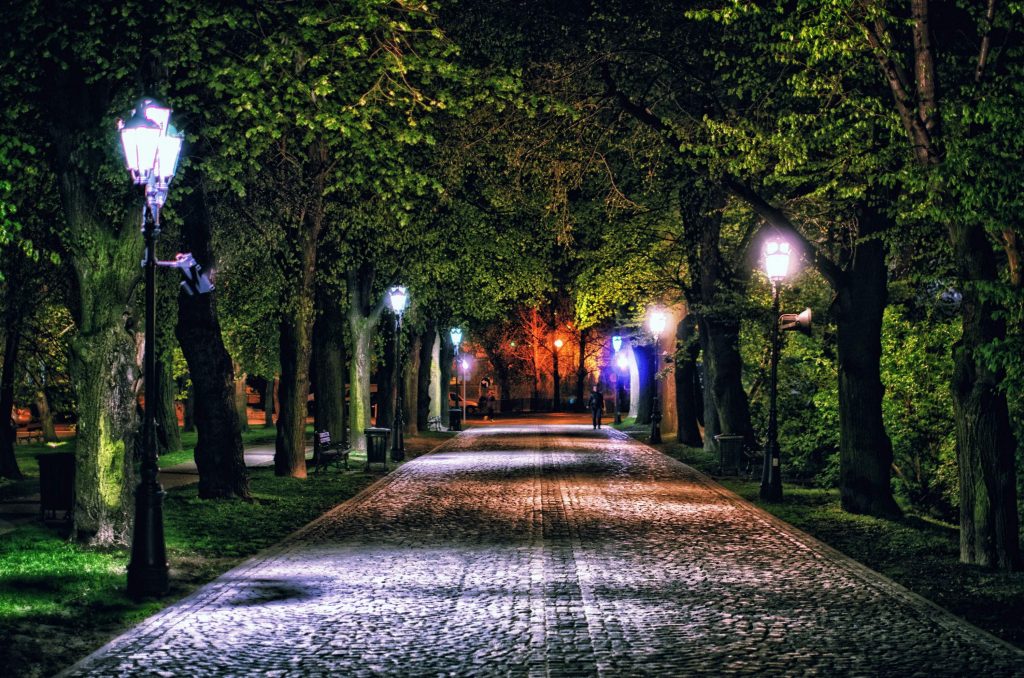
Landscape decorative backlighting is all about infusing creativity and artistic flair into the outdoor space. This type of backlighting often uses unique and decorative light fixtures to cast intricate patterns and shapes on nearby surfaces. Outdoor decorative backlighting can be employed on walls, pathways, or water features, creating an awe-inspiring visual display that enhances the overall aesthetics of the landscape. Unlike other types of backlighting, exterior decorative backlighting is more focused on artistic expression, making it a delightful addition to gardens, public spaces, and event venues.
Types of Outdoor Back Lighting Fixtures
Outdoor back lighting fixtures play a crucial role in transforming ordinary outdoor spaces into enchanting realms of beauty and charm. By strategically placing these fixtures, such as spotlights, pathway back lights, and hanging back lights, behind landscape elements, designers can create captivating visual experiences that delight residents and guests. In this post, we will look at different types of outdoor back lighting fixtures and how each kind provides a distinct charm to the outdoor area.
Spotlights
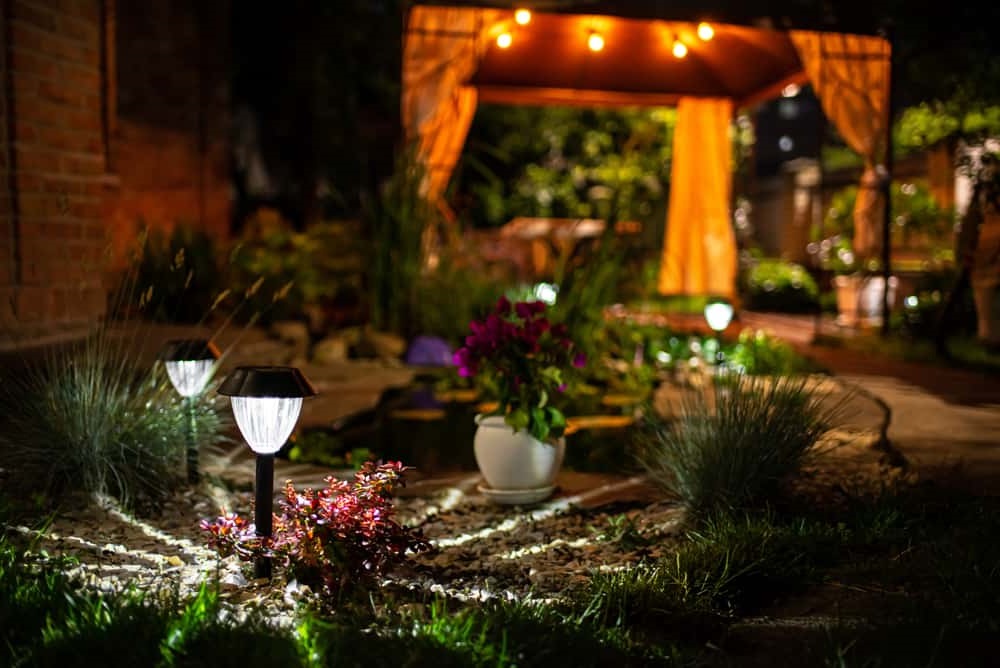
Spotlights are popular and versatile outdoor back lighting fixture that adds drama and focus to specific landscape features. These fixtures are typically adjustable, allowing designers to direct a concentrated beam of light onto trees, sculptures, architectural elements, or any other focal point they wish to highlight. Spotlights can create stunning silhouettes and shadows, adding depth and dimension to the landscape. They are ideal for creating a sense of grandeur in large gardens or lighting key elements in smaller outdoor spaces. Spotlights come in various sizes and intensities, providing flexibility in achieving the desired lighting effects. They can be installed in the ground or mounted on walls or trees, making them a versatile choice for any outdoor design project.
Hanging Back Lights
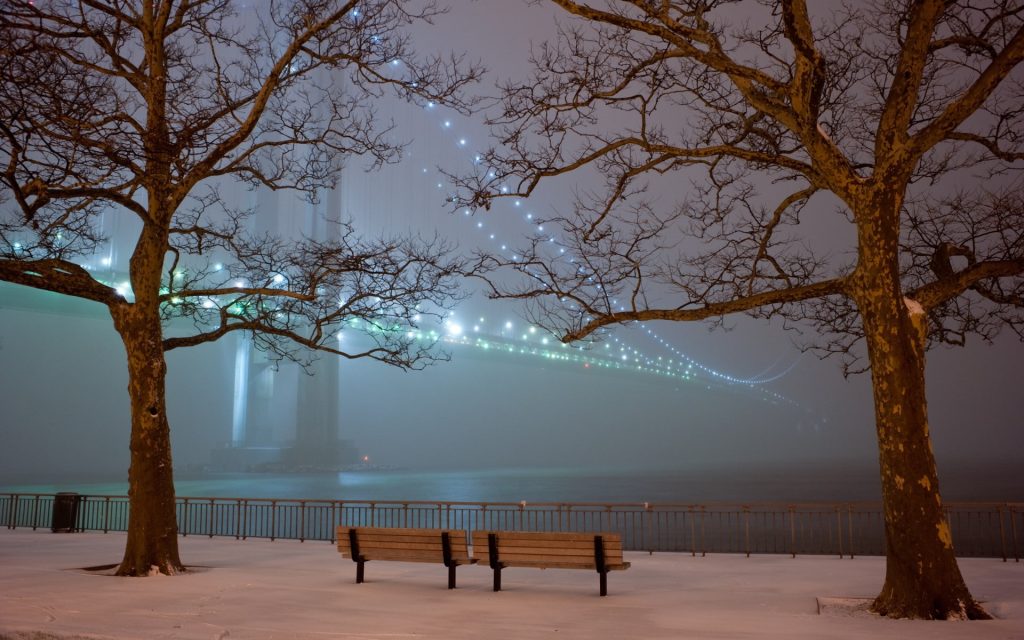
Hanging back lights are a charming outdoor lighting feature that adds beauty and whimsy to the environment. These fixtures hang from overhead structures like pergolas, trellises, or tree branches, producing a warm and inviting glow from above. Hanging back lights can create comfy seating areas, charming dining areas, or beautiful outdoor event spaces. Because hanging back lights come in a variety of shapes, sizes, and materials, the design options are limitless. Designers can select fixtures that match the overall theme and style of the outdoor space, ranging from delicate fairy lights to rustic lanterns.
Pathway Back Lights
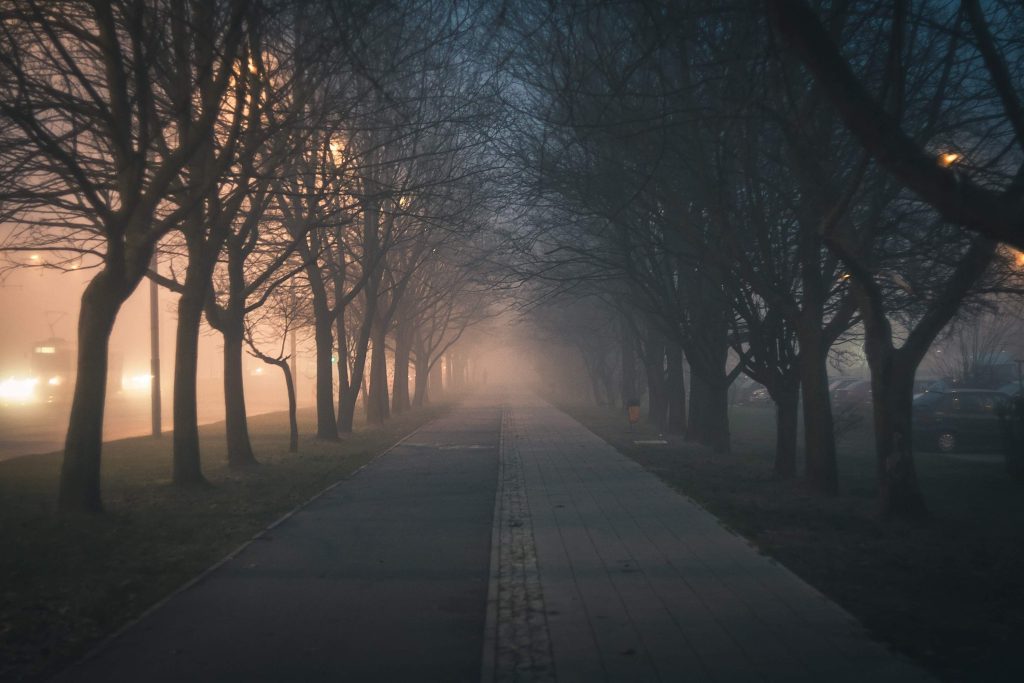
Pathway back lights are practical and functional setups that provide safe navigation over outdoor paths and walkways during late-night hours. These fixtures are often at ground level and placed behind plants, rocks, or low barriers that line the pathway. Because the light source hides behind these elements, the path’s back lights emit a soft, diffused glow that lights the pathway without creating glare or irritation to pedestrians. Pathway back lights offer an attractive touch to the environment, directing visitors down the garden walks while improving the mood of the surroundings. They are a fantastic solution for home walks, public parks, and commercial outdoor locations where safety and aesthetics are crucial.
Guide to Installing Outdoor Landscape Back Lighting
Outdoor landscape back lighting can transform your outdoor spaces into enchanting realms of beauty and allure. You can generate an engaging visual experience for residents and tourists by strategically arranging lighting fixtures behind landscaping components. However, correct installation is essential for an effective and eye-catching lighting display. In this tutorial, we will walk you through the steps of installing outdoor landscape backlighting, from planning and design to fine-tuning the system.
Plan and Design
During the day, stroll around your outside space and select the aspects you want to emphasize, such as trees, sculptures, paths, or architectural components. Consider the atmosphere and emotion you want to create, whether it’s a delicate and romantic light or a dramatic and intense effect. Next, draw a thorough design of your exterior space and identify the locations of each lighting fixture. To avoid excessive glare or shadows, pay attention to the direction of light and the arrangement of fixtures. A well-planned design will ensure that outdoor landscape back lighting produces the intended impact.
Gather Materials
Once you have your lighting plan, it’s time to gather the necessary materials. Depending on your design, you’ll need a variety of outdoor lighting fixtures, such as spotlights, pathway back lights, hanging back lights, and uplights. Choose fixtures suitable for outdoor use and withstand weather conditions. A low-voltage transformer to power the lights, electrical lines, connections, and stakes to secure the fixtures are all required in addition to the fixtures. To ensure the longevity and performance of your outdoor lighting system, invest in high-quality materials.
Install Fixtures
Start installing the fixtures with spotlights and pathway back lights, as these will form the backbone of your landscape back lighting. Follow your lighting plan to position the fixtures behind the chosen landscape elements. Anchor the fixtures securely into the ground or mount them on walls or trees as needed. For hanging back lights, attach them to pergolas, trellises, or overhead structures using appropriate hardware. Take care to ensure that the hanging back lights are well-balanced and safely suspended.
Connect Wiring and Transformer
After installing the fixtures, connect the low-voltage electrical cords to each light according to the manufacturer’s instructions. To keep the wires out of sight and safe from damage, bury them in shallow ditches or cover them with mulch. Connect the power lines to the low-voltage transformer next. The transformer converts ordinary 120-volt household electricity to a safe 12-volt output for your landscape lighting. Place the transformer in a weather-resistant and easily accessible area, such as a garage or outdoor shed.
Test the System and Fine-Tuning
After finalizing the installation is crucial to test the entire lighting system. Turn on the transformer and check that all fixtures are working as intended. Walk around the outdoor space to make sure the light distribution is consistent with your design. Adjust the positioning of fixtures if necessary to achieve the desired effect.
With the lighting system tested and operating, the final step is to fine-tune the illumination. To perfect the lighting, make any necessary changes to the direction, intensity, and positioning of the lights. Remember that outdoor landscape back lighting should provide a smooth and even visual experience, so fine-tune the system until you reach the ideal atmosphere.
Landscape Backlighting Outdoor Best Practices
Landscape backlighting is a captivating lighting method that adds depth, drama, and enchantment to outdoor spaces. Properly executed, it can transform an ordinary landscape into a magical realm that captivates residents and visitors alike. To achieve stunning results with exterior backlighting is essential to follow best practices in design, avoid common mistakes, and prioritize regular maintenance. In this comprehensive guide, we will explore key considerations and expert tips for successful landscape backlighting in outdoor settings.
Design Ideas for Landscape Backlighting
Determine the main focus points in your outdoor space, such as statues, water features, or distinctive architectural components. Backlighting these points strategically creates a spectacular and attractive display that gathers attention and admiration.
Architectural Elements
If you have intriguing architectural elements in your outdoor space, such as pillars, columns, or trellises, backlighting can emphasize their beauty, making them visually appealing day and night.
Sculptures and Artwork
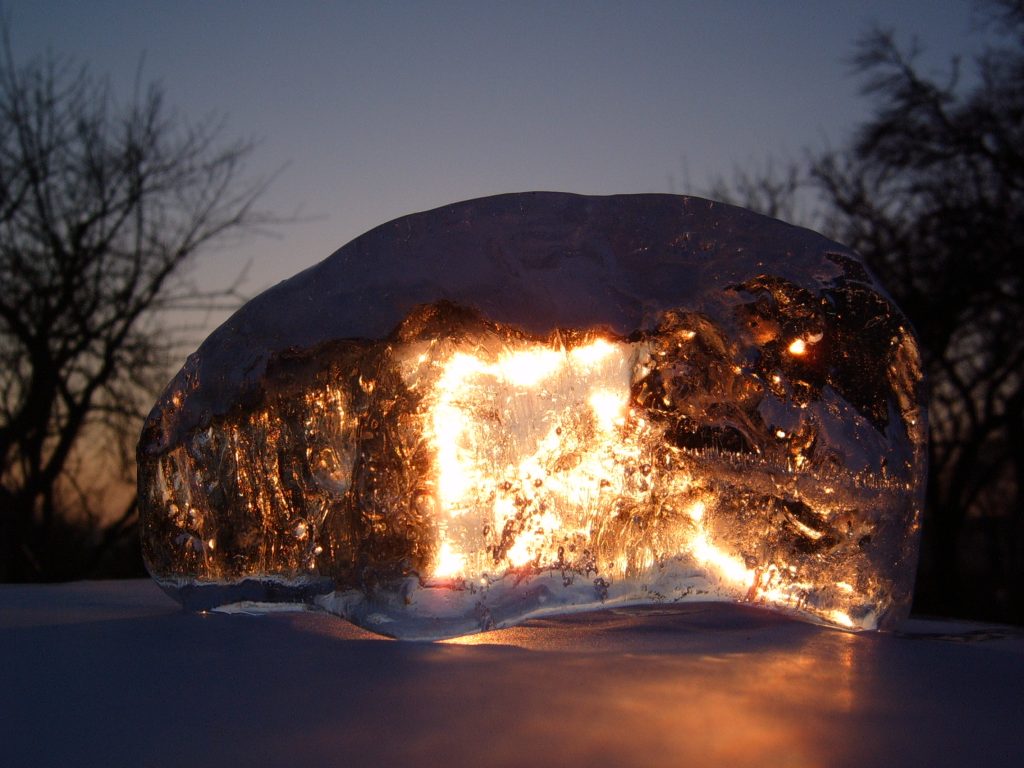
Turn your garden into an open-air art gallery by strategically placing lights behind sculptures and artwork. The play of light and shadow will elevate the artistic appeal of your garden.
Tree Silhouettes
Backlighting majestic trees can add a sense of grandeur and elegance to your landscape. Placing lights at the base behind the tree and angling them upwards accentuates the height and texture of the tree. This technique not only makes the trees stand out during the night but also creates a stunning focal point that draws attention to their natural beauty.
Water Features
Backlighting a running stream or a modest cascade in your environment can produce an ethereal appearance. The light reflecting off the cascading water creates a glittering and captivating environment that draws visitors in. This approach stands out beautifully at night and may transform a simple water feature into a fascinating centerpiece.
Avoiding Common Mistakes in Landscape Backlighting
Over-illumination: Avoid using excessive lighting that can create glare and discomfort for viewers. Strive for a balanced and subtle illumination that enhances the landscape’s beauty without overwhelming the senses.
Poor Positioning: Incorrect positioning of lighting fixtures can result in unflattering shadows or unwanted light distribution. Plan the layout carefully to ensure that each landscape element receives adequate lighting.
Neglecting Light Pollution: Be mindful of light pollution and its impact on the environment. Choose night-sky-compliant fixtures and aim lights downward to prevent unnecessary light spillage into the night sky.
Ignoring Safety: When installing outdoor lighting fixtures, keep safety in mind. To avoid tripping dangers, secure hanging backlights and ensure that electrical cables are safely buried or covered.
Forgetting about Maintenance: Regular maintenance is essential to keep your landscape backlighting in optimal condition. Dirty or damaged fixtures can affect the overall lighting quality and longevity of the system.
Maintenance and Troubleshooting Tips
Cleaning: Sweep the fixtures regularly to remove dirt, dust, and debris that can diminish their performance. Wipe lenses and diffusers gently with a soft cloth and a mild cleaning solution to maintain clear and even lighting.
Inspecting Electrical Connections: Periodically inspect the electrical connections to ensure they are secure and free of corrosion. Loose or damaged connections can result in flickering lights or system malfunctions.
Checking Transformers: Inspect the transformer regularly for any signs of wear or damage. Check that it works properly and provides the required output voltage for the lighting fixtures.
Replacing Bulbs: Monitor the lifespan of light bulbs and replace them promptly when they reach the end of their recommended usage period. Failing to replace bulbs can result in uneven lighting or complete fixture failure.
Addressing Issues Promptly: If you notice any issues with your landscape backlighting, such as flickering lights or complete darkness in certain areas, address them promptly. Timely troubleshooting and repairs can prevent further complications and extend the system’s lifespan.
Trends and Innovations in Landscape Backlighting
The landscape backlighting industry continues to evolve, embracing innovative technologies that enhance outdoor spaces in stunning ways. From the energy-efficient brilliance of LED backlighting to the self-sustainability of solar-powered options, these trends transform landscape lighting into an environmentally friendly and visually captivating experience. Color-changing effects, motion sensors, automated lighting sequences, and voice and smart controls further elevate the functionality and aesthetics of outdoor backlighting, making it a versatile and user-friendly choice for homeowners, businesses, and public spaces alike. Embrace these trends and innovations to illuminate the night and create enchanting outdoor realms that leave a lasting impression on all who experience their magical glow.
LED Backlighting
With its energy-efficient and long-lasting qualities, LED backlighting has transformed the landscape lighting market. LED fixtures utilize substantially less energy than traditional lighting solutions, resulting in cheaper electricity bills and a lower environmental effect. Furthermore, LEDs have a longer lifespan and require fewer replacements and maintenance, making them a cost-effective and environmentally friendly option for landscape illumination.
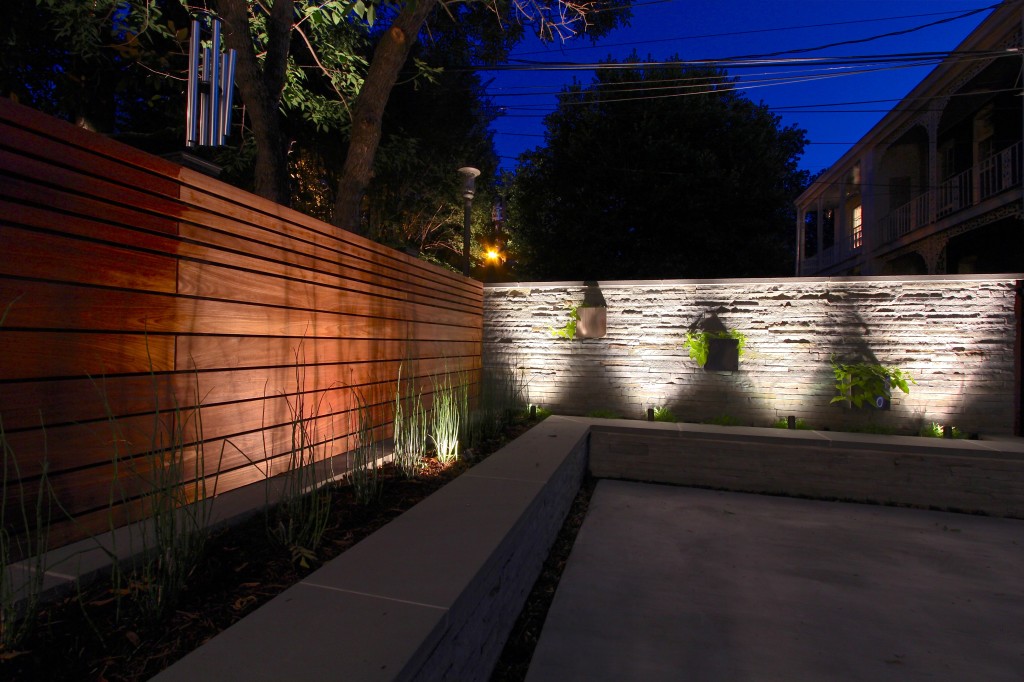
LEDs’ adaptability also allows designers to generate a wide range of lighting effects, from warm and inviting tones to crisp and chilly hues. LED backlighting offers limitless possibilities for outdoor aesthetics, whether it’s lighting paths, emphasizing focal spots, or creating a mesmerizing dance of light and shadow.
Solar-Powered Backlighting
Solar-powered backlighting has arisen as an eco-friendly alternative for outdoor lighting, with an increasing emphasis on sustainability and renewable energy. Solar-powered fixtures collect energy from the sun during the day and store it in built-in batteries to power the lights at night. This self-contained system eliminates the need for electrical wires, lowering installation costs and environmental impact.
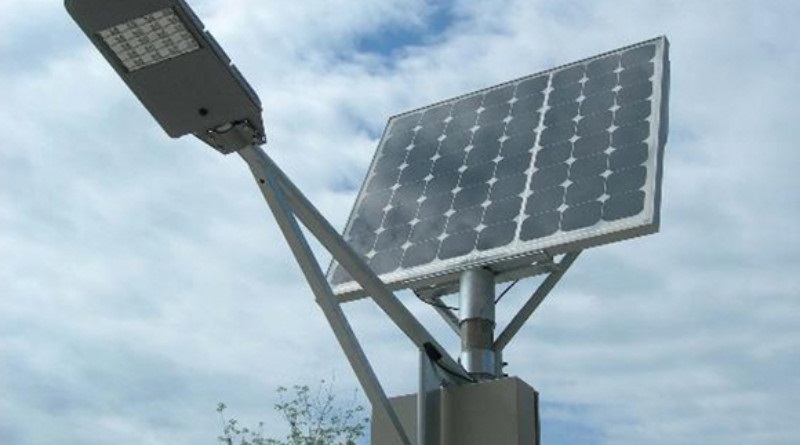
Solar-powered illumination is very useful in isolated settings or regions with limited electrical availability. It also enables simple installation without the effort of burying electrical connections, making it a practical and eco-friendly alternative for landscape lighting.
Color-Changing Backlighting
Color-changing fixtures are gaining popularity for their capacity to generate dynamic visual displays, adding a touch of drama and excitement to landscape backlighting. The lights with changing color options may transform the ambiance of outdoor spaces, adjusting to different moods and events.
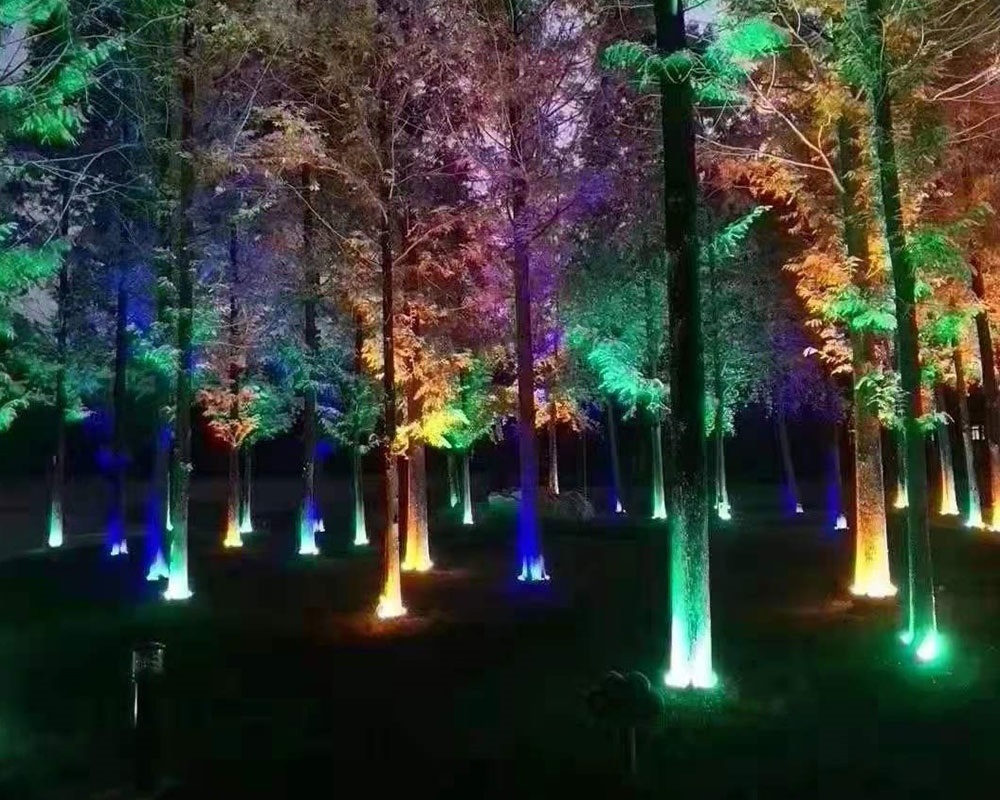
Outdoor backlighting with changing colors is perfect for entertainment venues, events, and even residential gardens, where lighting may fit various themes or seasons. Color-changing backlighting adds a new degree of versatility to outdoor lighting design, whether it’s a tranquil blue for a serene ambiance or brilliant hues for a dynamic gathering.
Motion Sensors & Timers
Motion sensors and timers are useful additions to landscape lighting that save energy use while increasing safety. Motion sensors can activate the lights only when motion is detected, conserving energy during rest. This feature is especially beneficial for pathway lighting, as it ensures a well-lit walkway only when necessary.
Timers give consumers more control over lighting schedules by allowing them to program specified on and off periods. Landscape backlighting can start automatically during twilight hours or on particular occasions using timers, ensuring a fascinating show without personal involvement.
Automated Lighting Sequences
Landscape backlighting is enhanced by automated lighting sequences, which add an element of aesthetics and storytelling. These sequences can be pre-programmed to provide enthralling lighting displays that change over time. For example, the lights may progressively intensify at sunset, then fade to mild and subtle tones during the late night hours.
The automated lighting sequences provide complexity and fascination to outdoor environments, making them popular choices for public parks, plazas, and entertainment venues. Designers can build beautiful visual narratives that catch visitors’ imaginations by meticulously choreographing lighting changes.
Voice and Smart Controls
Landscape backlighting is enhanced by automated lighting sequences, which add an element of aesthetics and storytelling. These sequences can be pre-programmed to provide enthralling lighting displays that change over time. For example, the lights may progressively intensify at sunset, then fade to mild and subtle tones during the late night hours.
The automated lighting sequences provide complexity and fascination to outdoor environments, making them popular choices for public parks, plazas, and entertainment venues. Designers can build beautiful visual narratives that catch visitors’ imaginations by meticulously choreographing lighting changes.
Real-Life Outdoor Landscape Back-Lighting Designs
Outdoor landscape back-lighting designs can transform ordinary outdoor spaces into enchanting realms of beauty and charm. By strategically lighting statues, trees, water features, and entire yards with captivating back-lights, designers can create a mesmerizing visual experience that captivates the senses. In this post, we will explore real-life examples of stunning outdoor landscape back-lighting designs that showcase the magic of nature’s beauty in all its glory.
Back-Lighting Statues
Back-lighting is a popular design choice for statues that gives an ethereal touch to sculptures and art installations. Designers can create dramatic silhouettes that stand out against the blackness of the night by properly arranging lighting bulbs behind sculptures.
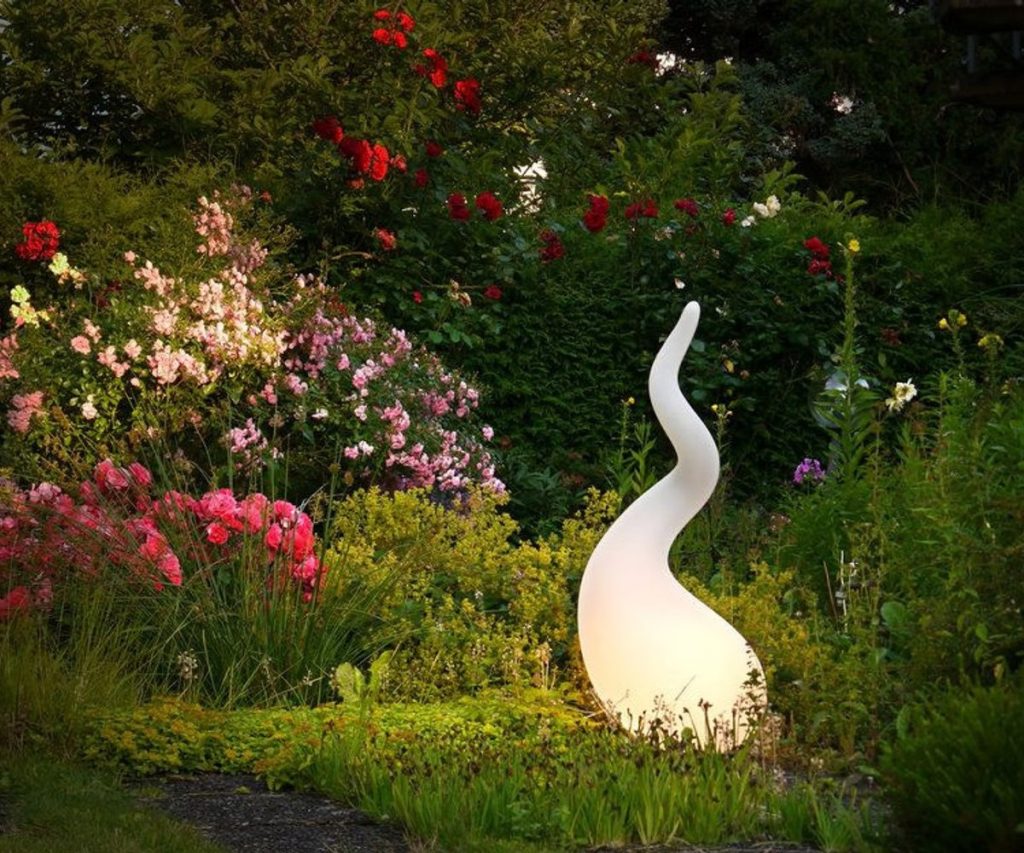
A peaceful garden with a marble statue of a nymph is an excellent example. The statue’s exquisite features come to life as if it were a living entity thanks to soft, warm LED back-lighting. The play of light and shadow lends depth to the contours of the statue, generating a feeling of mystery and fascination.
Landscape Tree Back-Lighting
Back-lighting trees in the landscape creates an enchanting canopy of light that celebrates the majesty of nature’s giants. In a picturesque park setting, towering oak trees are transformed into captivating natural sculptures with the help of uplights.
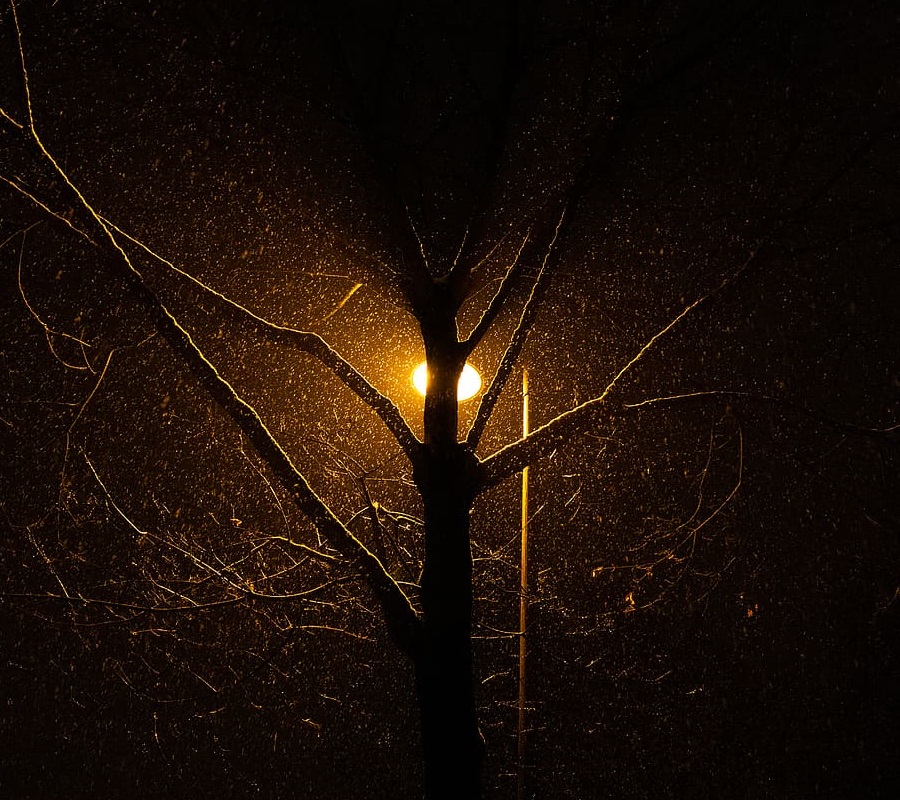
Strategically positioned at the base of the trees, the uplights cast a gentle upward glow, highlighting the intricate branching patterns and lush foliage. The resulting spectacle resembles a magical forest, inviting visitors to wander beneath the softly lighted canopy and immerse themselves in nature’s embrace.
Water Feature Back-Lighting
Water features take on a magical allure when complemented by the mesmerizing dance of back-lighting. In a contemporary urban courtyard, a sleek stainless steel fountain becomes a captivating focal point under the enchantment of underwater LED lighting.
Submerged LED fixtures create a stunning color-changing effect, turning the flowing water into a mesmerizing palette of hues. The interplay of light and water creates a captivating spectacle that delights onlookers and adds a touch of sophistication to the outdoor space.
Landscape Back-Lighting Yard
Landscape back-lighting can be extended to include the entire yard for a beautiful and unified design. The entire Mediterranean-style garden is converted into a romantic haven by the enchantment of soft LED back-lighting. The low-voltage LED lamps are carefully hidden beneath plants and architectural components, casting soft, diffused lighting around the yard. This all-encompassing approach provides a tranquil and inviting atmosphere for outdoor parties and personal evenings beneath the stars.
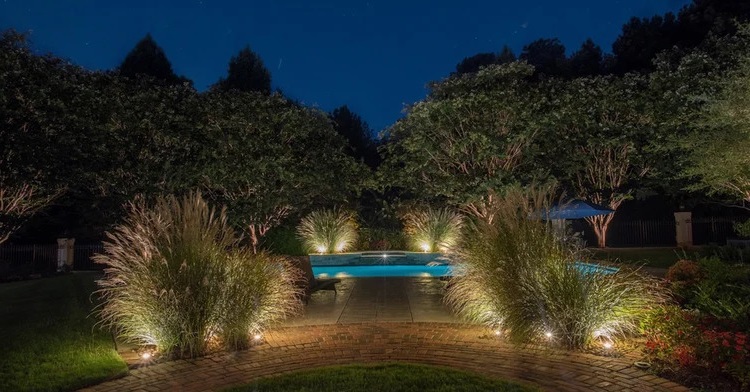
Real-life outdoor landscape back-lighting designs demonstrate the fantastic potential of outdoor lighting to enhance nature’s beauty. Each design choice adds its unique appeal to the outside area, from back-lighting sculptures to show their fine features to back-lighting trees to form attractive canopies. The interplay of light and water brings water features to life, while holistic landscape back-lighting transforms entire yards into enchanted places of romance and calm.
These real-world examples show how intelligent and imaginative lighting design can improve outdoor areas, generating fascinating visual experiences that last long after sunset. Designers and homeowners alike may turn their outside areas into enchanted sanctuaries that appreciate nature’s artistry by embracing the wonder of outdoor landscape back-lighting.
Conclusions
Landscape backlighting has proven to be a remarkable and transformative lighting technique that adds depth, drama, and enchantment to outdoor spaces. As we have explored in this guide, the magic of landscape backlighting lies in its ability to show the natural beauty of our surroundings in captivating ways. From highlighting statues and trees to enhancing water features and entire yards, this artful illumination breathes life into outdoor environments, making them vibrant under the gentle radiance of the night sky.
One of the key advantages of landscape backlighting is its versatility. Designers and homeowners can craft a wide variety of visual experiences by selecting different types of lighting fixtures, color temperatures, and positioning strategies. LED backlighting, in particular, has emerged as a game-changer, offering energy efficiency, long-lasting performance, and the freedom to create diverse lighting effects that suit any outdoor setting.
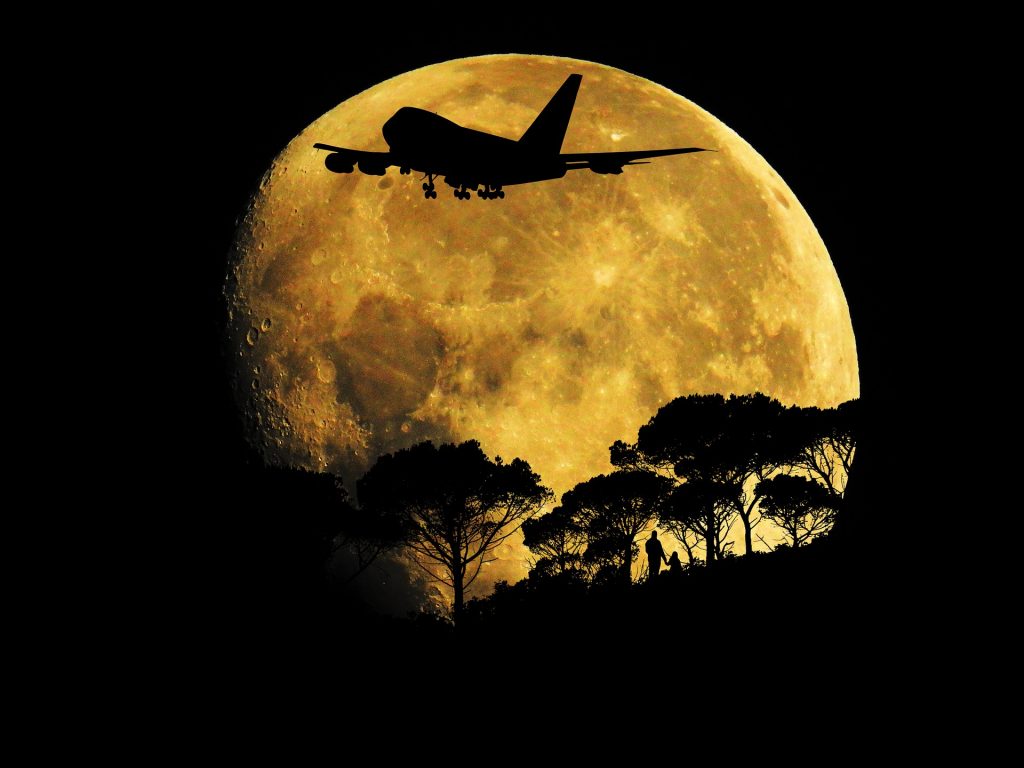
In conclusion, landscape backlighting has become an essential element of modern outdoor design, enabling us to experience the beauty of nature in new and enchanting ways. From practical benefits such as energy efficiency and sustainable solutions to the sheer delight of creating visual marvels, outdoor backlighting continues to captivate homeowners, designers, and visitors alike.
Ultimately, in the hands of skilled designers and passionate homeowners, landscape backlighting becomes an art form, a symphony of light and shadow that illuminates the beauty of our world. Embrace the magic of outdoor backlighting and let it guide you to create outside spaces that tell stories, evoke emotions, and connect us to the beauty that surrounds us.
FAQs (Frequently Asked Questions) about Landscape Back Lighting
Q1.Can I install landscape back lighting myself?
You certainly can. If you are unsure about electrical work, it is preferable to hire a professional to ensure a safe and well-executed installation.
Q2.Can landscape back lighting improve home security?
Landscape back lighting is a powerful and effective means of improving home security. By enhancing visibility, eliminating hiding spots, and creating a well-defined perimeter, outdoor back lighting acts as a significant deterrent against potential intruders. Additionally, when combined with smart home security systems, it offers the convenience of remote monitoring and control, further enhancing the safety of your property.
Q3.Can Landscape back lighting be used for small gardens?
Absolutely! Landscape back lighting can do wonders in small gardens by adding depth and making the space appear larger.
Q4.Can landscape back lighting increase the value of my property?
Landscape back lighting is an excellent investment that can significantly boost the value of your home. Outdoor back lighting produces a compelling and appealing property that stands out in the real estate market by increasing curb appeal, extending outdoor living spaces, and improving security. Energy efficiency, smart home integration, and the emotional connection it elicits all contribute to its value as a home improvement.
Q5.How do I maintain my landscape back lighting system?
Regularly clean the fixtures, check for loose connections, and replace any damaged bulbs to ensure the longevity and optimal performance of your landscape back lighting.
Q6.What color of light is best for landscape back lighting?
Warm white light (2700K to 3000K) exudes a comfy and inviting atmosphere, ideal for creating intimate and comforting areas. Neutral white light (3500K to 4000K) offers balanced elegance, enhancing details without overpowering the landscape. Cool white light (4000K to 5000K) brings a contemporary and energizing vibe, adding a touch of drama and vibrancy to your outdoor setting.
Q7. Are solar-powered lights suitable for landscape back lighting?
Solar-powered lights can be an eco-friendly and cost-effective choice for landscape back lighting, especially in areas with ample sunlight.
Q8.Should landscape back lights be taken down in winter?
The decision to remove landscape back lights in the winter depends on different factors, including the quality of the fixtures, the severity of the winter weather, aesthetic preferences, and energy considerations. Weather-resistant fixtures may endure freezing temperatures, eliminating the need for removal. However, in areas prone to severe winter weather, temporary removal may be necessary to protect the fixtures from damage.
Q9.Is landscape back lighting safe for wildlife?
When implemented thoughtfully, landscape back lighting poses no harm to wildlife. Avoid excessive lighting and disturbing natural habitats.
